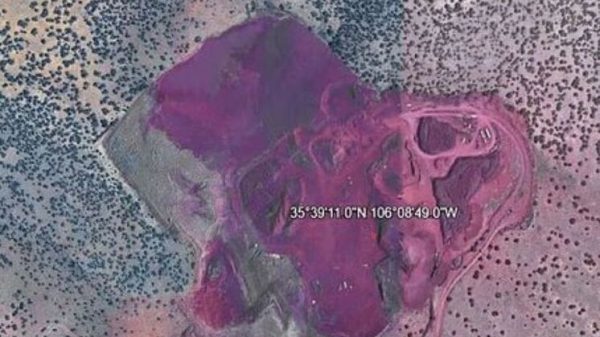In 1969, a clerical error resulted in the Samish Indian Nation in Washington state suddenly being dropped from the federal government’s list of recognized tribes. It took almost three decades of wading through piles of historical documents and painstaking litigation before its members were able to regain that recognition, along with the federal benefits and protections that come with it.
Their success hinged on unearthing a wealth of documents – court cases, family histories, tribal correspondence with the federal government – much of which was found at the National Archives facility in Seattle, according to Tom Wooten, the Samish Indian Nation tribal chairman.
“It was a struggle but we persevered through it,” Wooten said. “And to be honest, if that information wasn’t available at the archives, it would be really hard to bring any case like that today.”
But the archive, which sits on a 10-acre site at the edge of Lake Washington, is under threat. It is among a dozen federal properties across the US expected to be put up for sale next year after being identified as “high value assets”, a move that could deprive the Native American community in the Pacific north-west of access to critical resources.
‘We won’: Indigenous group in Canada scoops up billion dollar seafood firm
Read more
The archive contains nearly 58,000 cubic feet – or roughly 174m pages – of permanent records generated by federal agencies and courts between the 1860s and 2000s. It is a vast collection that contains key pieces of information about indigenous people in Washington, Oregon, Idaho, and even Alaska, after the National Archives in Alaska closed in 2014.
In recent decades, these documents have been used by indigenous people to help with everything from gaining federal tribal recognition and fighting for fishing rights, to individual petitions for tribal enrollment. If the building sells, the documents are expected to be relocated to facilities in Missouri and California.
The move has been denounced by Native American tribes in the surrounding area, who say splitting the records and moving them to other parts of the country will be harmful. Only a small fraction – between 1% and 3% – of the records have been digitised, meaning accessing the vast majority of them could require a trip of hundreds or even thousands of miles.
Josh Reid, associate professor of American Indian studies at the University of Washington and a registered member of the Snohomish Indian Nation, said this decision will hit tribal nations hardest.
“You’ve still got a number of federally unrecognized tribes that are petitioning for recognition, so this will set their efforts even further back,” said Reid. “It’s just a staggering loss. I’m really hard-pressed to understand the logic beyond just simple ineptitude on the part of the federal government.”
In a statement sent to the Guardian, the National Archives said it was committed to digitising its records in Seattle so they are available free no matter where a person is located.
Records that have not yet been digitized can be scanned and sent to people unable to visit in person at a cost of 80 cents per page, explained Susan Karren, the director of the National Archives at Seattle.
But issues related to the Native community can be very complicated, and in many cases it is not always clear which documents may be needed.
Native people are the only racial group that have an entire title of US code dedicated to laws related to them. Jon Shellenberger, lead Yakama Nation archaeologist, said this shows the complexity involved when it comes to fighting for their rights. He referenced the fact that his tribe has been to the supreme court nine times over the past 150 years just to deal with treaty fishing rights.
“We’ve won every time, but that takes work, that takes information, that takes going through the documents,” he said.
Shellenberger explained that making the trip to other archive facilities would require a lot of additional funds and time.
“It’s going to take flying down there and under whose dime? Fighting for treaty rights, there’s nobody paying for that, nobody funding that,” he said.
Robert Kentta, a council member and cultural resources director for the Confederated Tribes of Siletz Indians in Oregon, said this move would make it almost impossible for them to access these records.
“Our history is contained there, a lot of it. It’s documentation of how our reservation was established, how it was reduced, how different parts of it were opened up to non-Indian settlement,” said Kentta, who explained there had been periods when he had needed to make trips up to the archives five times in a single year, spending four days going through records in a single trip.
Robert de los Angeles, chairman of the Snoqualmie Indian tribe in Washington, called the decision to close the archives “irresponsible”. He explained in an email that the facility’s records were critical in the tribe’s fight to regain federal recognition in the 1950s.
He said: “We believe the facility should be retained and the records should remain in the area where they may remain readily accessible to Snoqualmie and other tribes.”
The Washington state attorney general, Bob Ferguson, has said he will sue to prevent the imminent sale of the archives building. He had previously filed lawsuits against three agencies involved in the decision to close the facility, in an effort to get records related to the sale. The new lawsuit is in response to what he described as a “dramatic change in the timeline for the sale”, explaining that it was expected to take place over the course of 2021, but now could happen at the beginning of the year.
Adam Bodner, the executive director for the Public Buildings Reform Board, which made the recommendation that the facility be sold, told the Guardian the sale is not expected to be completed until September at the earliest, and the National Archives and Records Administration (Nara) will continue to function out of that facility for three more years after that, while they relocate the documents.
He also explained that the board made the recommendation to sell after consultation with Nara, and that it was a real-estate decision:
“The property in question appeared on our analysis because it was very valuable property and the federal government could not get the money to maintain it,” said Bodner. “It needed extensive repair and alterations. So from a real-estate perspective, it did not make sense for the government to continue to invest in that facility.”
But tribal leaders say there was very little communication with them about this decision. Wooten, the tribal chairman, recalled being invited to a “consultation” between officials from the archives and Pacific north-west tribes almost a year ago, but he said it was held at the same time as a key National Congress of American Indians event and very few tribes attended.
“It wasn’t really a consultation,” he said. “It was, ‘This is what we’re doing, we just found out about this, this is the way it is’, more or less.”
Wooten said it was clear to him why, despite the many concerns surrounding this move, the government is moving forward with selling this more than 200,000 square foot property.
“They’re seeing all of the dollar signs,” he said. “It’s hard to put a value on history, but apparently some people can. It’s kind of sad.”




















































Свежие комментарии